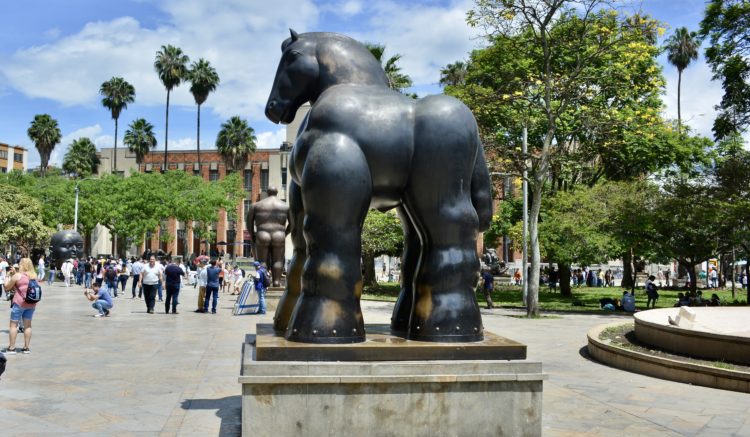From Cartagena we took the small flight to Medellín. Medellin after it’s traumatic history back in the 1980/90s is a definite highlight on any trip to Colombia, seeing how the city has recovered from its darkest days to the modern vibrant metropolis it is today is a fitting tribute to how life always finds a way to succeed and is a shining example of the progress Colombia has made to become the more progressive modern country it is today.
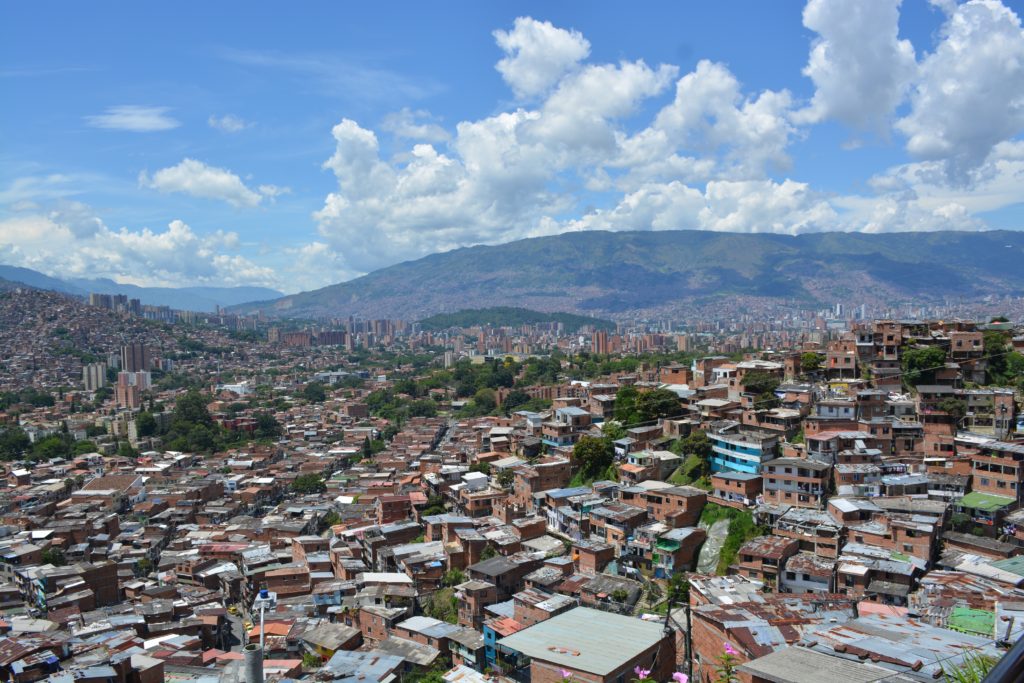
Flights in Colombia are not much more expensive than long distance bus journeys and can save enormous amounts of time. We did the equivalent bus journey back in 2018 and it took nearly a day, the flight was little more than 90 minutes.
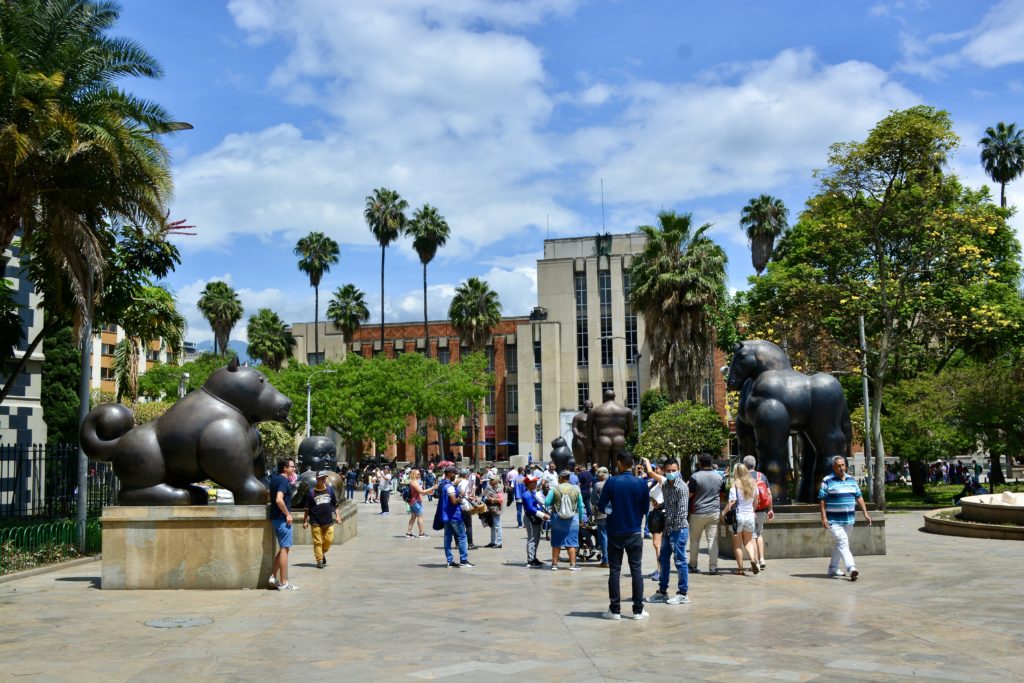
We arrived in Medellín on the Friday and were there for four days. Medellín was very busy, even on the Monday and it feels like the local population has fully moved on from Covid restrictions, indeed the city appeared to be busier than it was four years ago. Encouraging signs for the local economy and country.
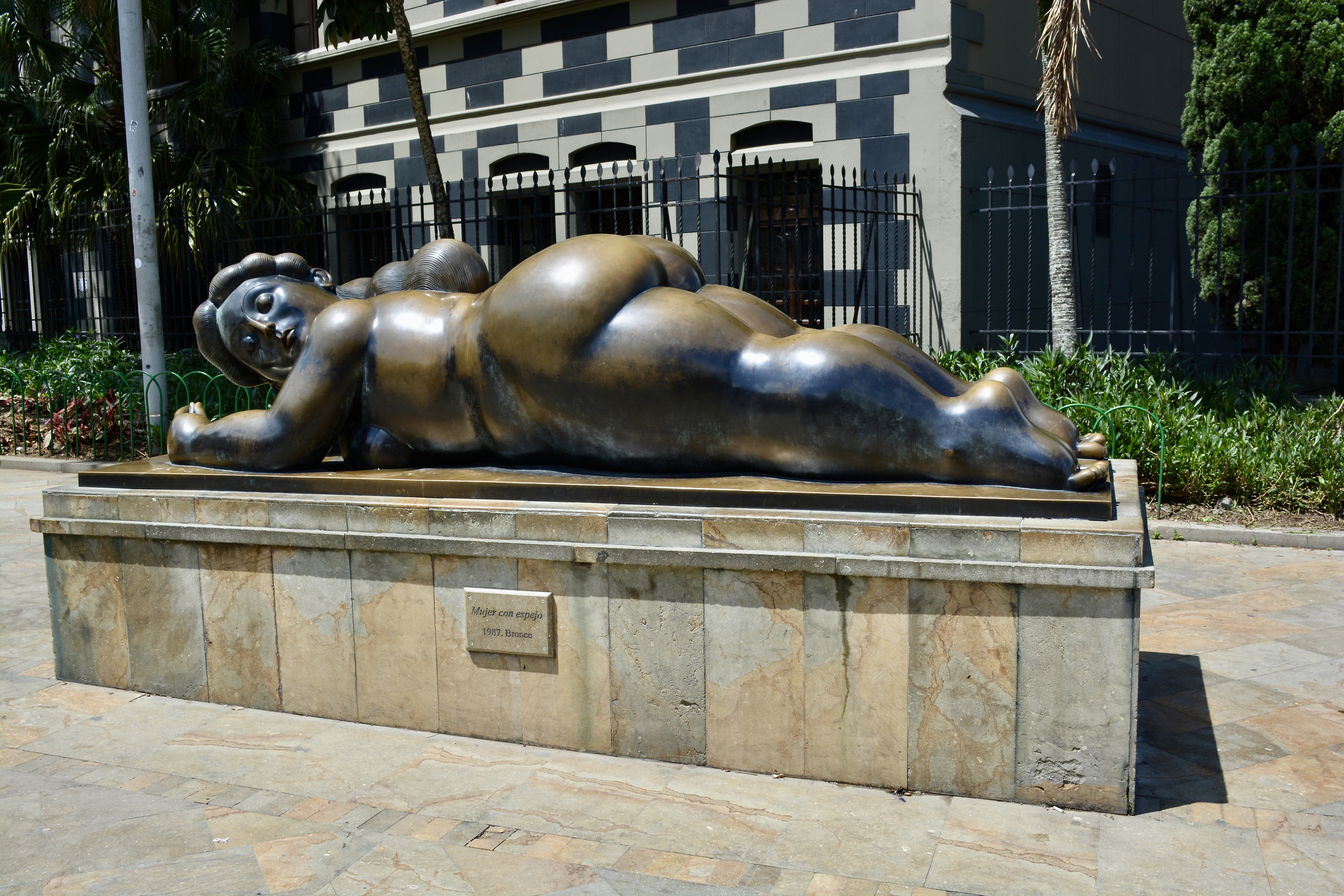
One of the major highlights to any visit to Medellín is seeing the 23 Botero statues in Plaza Botero. Seeing so many Botero’s in one place always brings a smile to ones face, and with everyone taking selfies with the bronze statues brings a real energy to the place. Where the people have consistently touched the statues, those areas have become more shiny as can be clearly seen in the above photo. Its very difficult to say which one is ones favourite, whether it is the dog, cat or the many fat reclining women. Each one is fun.
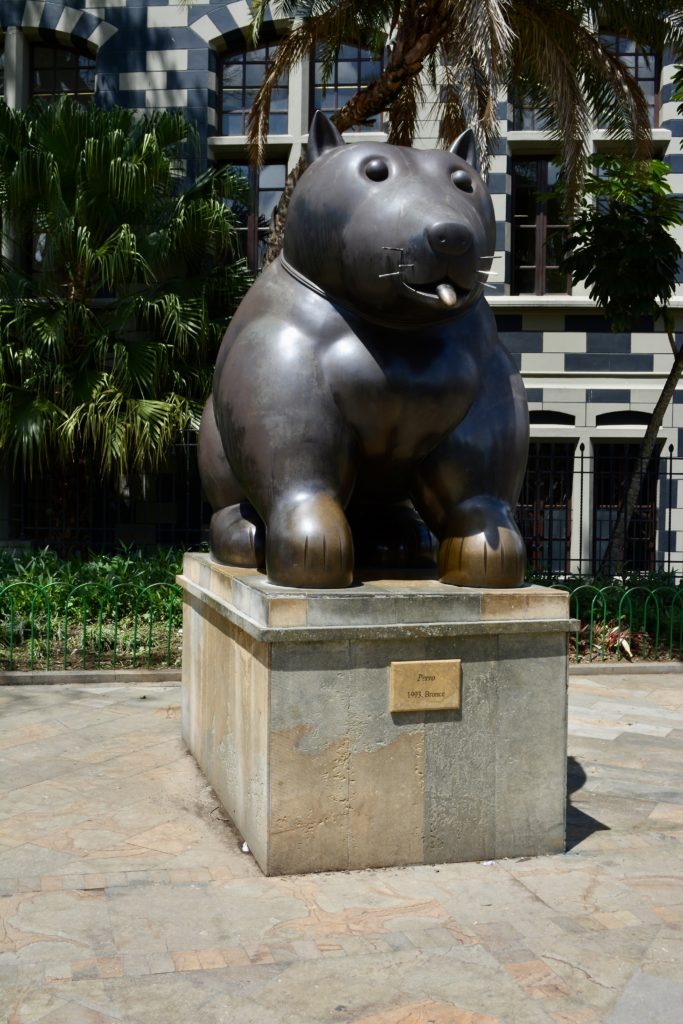
Also in the Plaza is the Museo Antioquia, which contains a large number of Botero’s paintings and also many of the prototypes of his public sculptures. Some of the paintings capture Medellín’s dark history with the violence associated with Pablo Escobar, in his unique style. This is definitely one museum not to be missed.
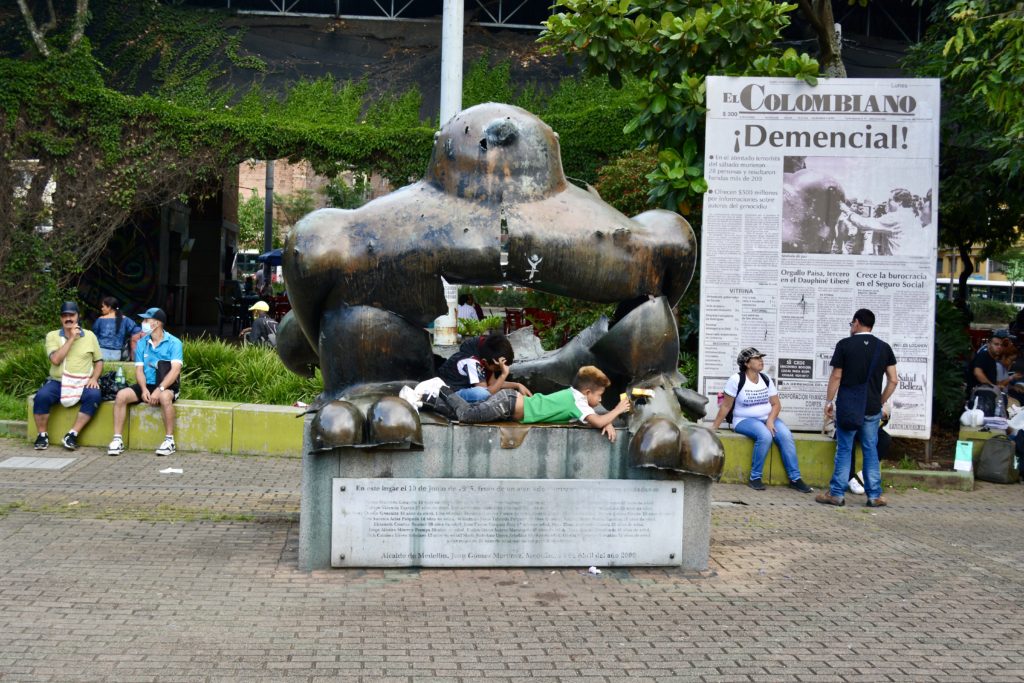
In the nearby Parque Antonio are Botero’s sculptures of birds. Here there are two identical birds, the first one was badly damaged in a bomb attack back in 1995, but rather than repairing the original bird, Botero created an identical one and located it by the side of the damaged one. This is a very poignant statement against the violence at the the time. Also seeing young kids playing in the above photo of the broken statue captures how life keeps on reinventing itself.
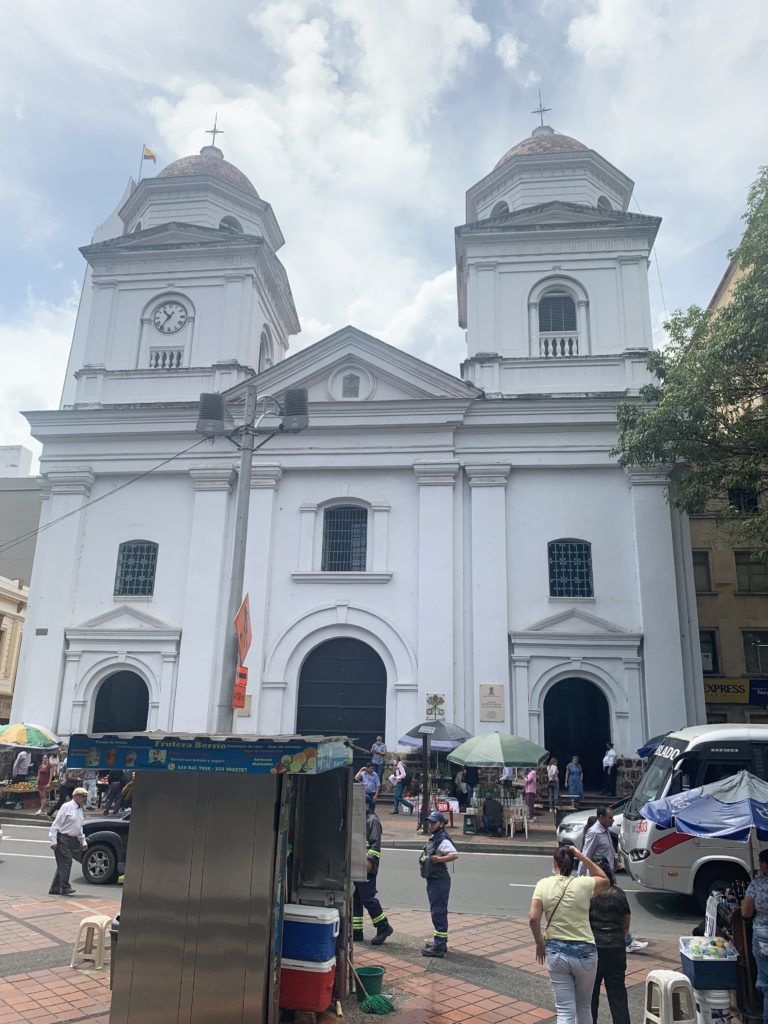
Medellín has a number of old churches, the two principal ones the Basilica of Our Lady of Candelaria and the Parroquia de la Veracruz are both quite small and all painted white were the original churches in Medellín. Today they are relatively modest inside and in the style of the first Spanish churches in Latin America, but both were actively used during our visit. The main cathedral is a few blocks away and is an imposing building made entirely of the traditional bricks of Medellín.
Our hotel was in the Poblado district, to the South of the city centre. Poblado really comes to life at night time, with numerous bars, restaurants and clubs. All sorts of music can be heard from Reggaeton, Rap, Salsa through to 1990s electronic Britpop. Since our last visit some places had closed, probably not helped by the roadworks in the main square, but businesses continue to refresh and new ones are always appearing.
Medellín also appears to be picking up with independent international travellers and it was probably the first place in Colombia that we felt that international travellers had fully returned. Indeed we even met an old friend from London in the popular Mondongo restaurant.
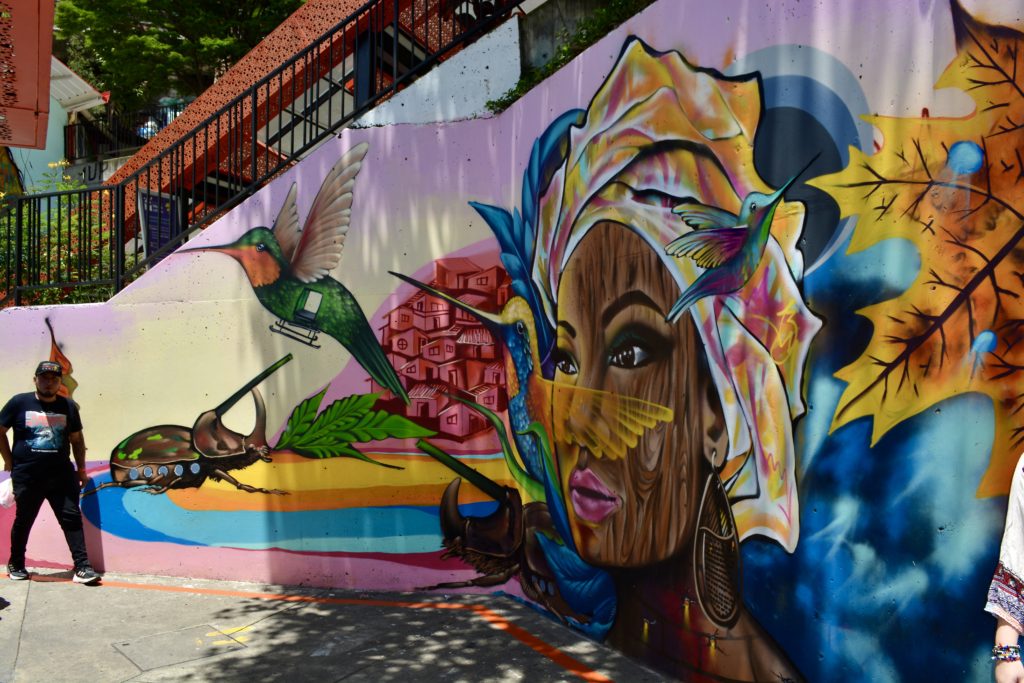
The other must do thing in Medellín is a Comuna 13 tour. Here it is important to do your research as there are a number of substandard tours around. We found a highly recommended Comuna 13 Graffiti Tour on Trip Advisor, where our guide Walter met us at Poblado Station and was an excellent guide for four hours around the Comuna. Back in 2018 we did one through the hotel which was not a patch on the one provided by Walter.
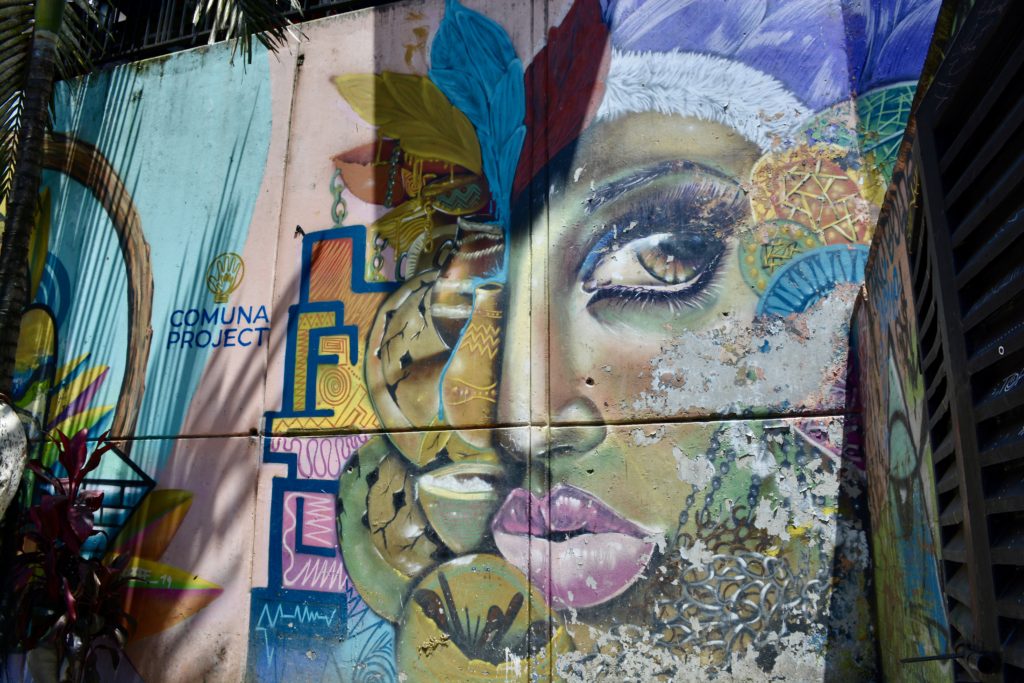
Walter provided an excellent narrative about the history, politics, socioeconomics etc. that make up the the Comuna and helps you understand the Comuna today and how it got there. Our tour was on a Sunday morning, and the Comuna was very busy and full of energy. It started with a hiphop dance group, and then we progressed up the escalators stopping of at a number of the big pieces for Walter to explain the subtle stories behind the many pieces of art.
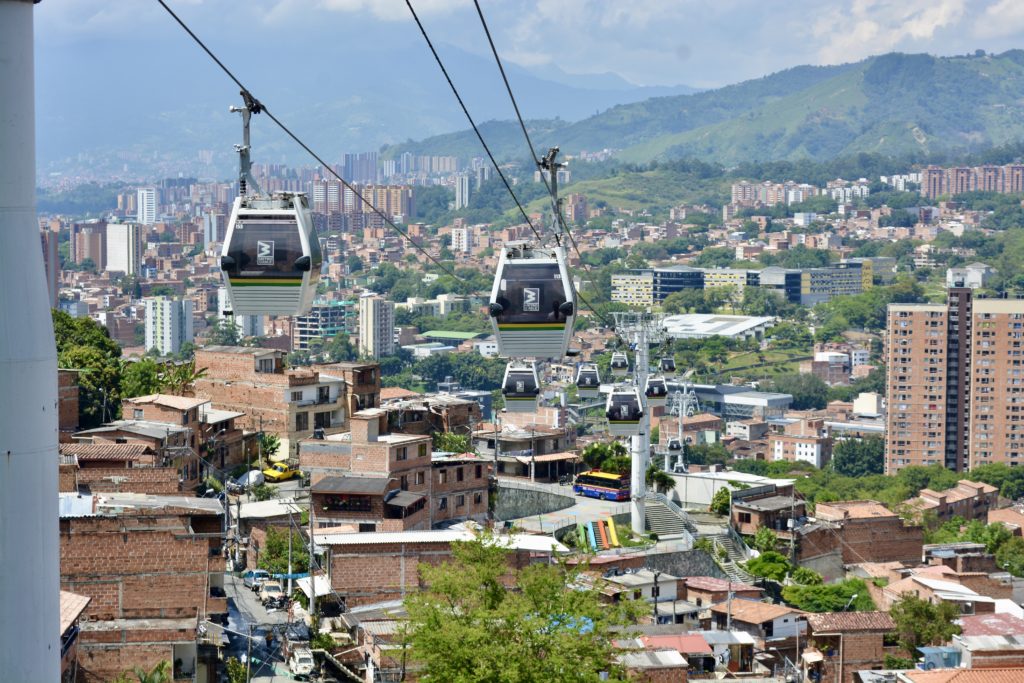
Getting around Medellín is very easy in its smart clean modern metro system and associated cable cars up to the more remote Comunas.
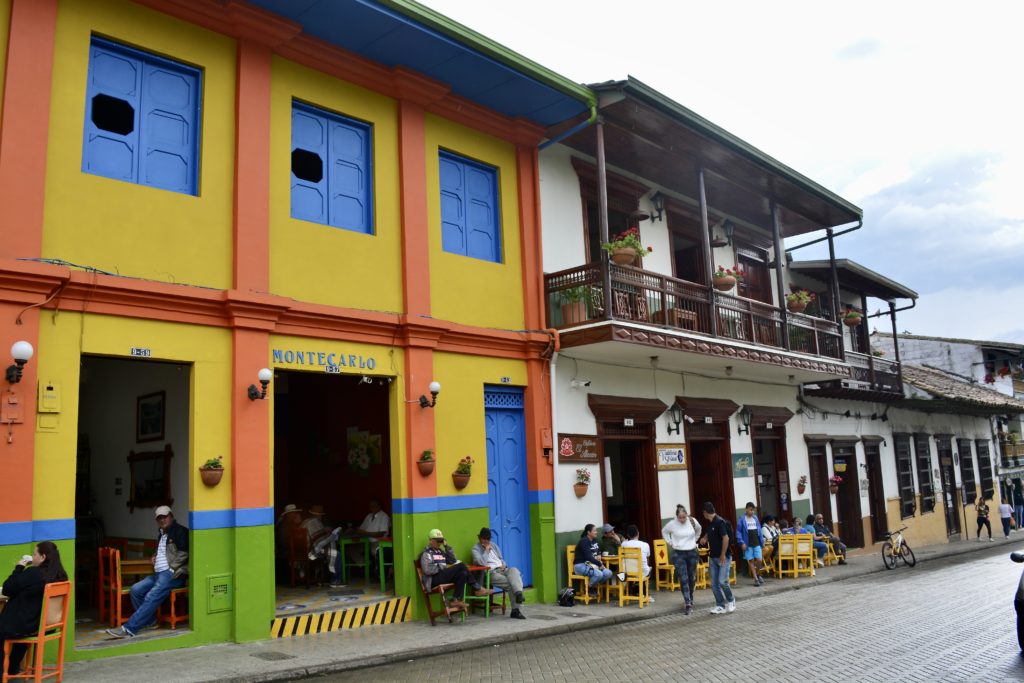
From Medellín we took the bus to Jardín de Antioquia, which locals call the most pretty small town in the province. The bus journey went on a big detour North before going South to avoid the many landslips and other blockages on the road. Also the journey gradually climbs in altitude and amongst the many luscious crops being farmed we started to see many coffee bushes.
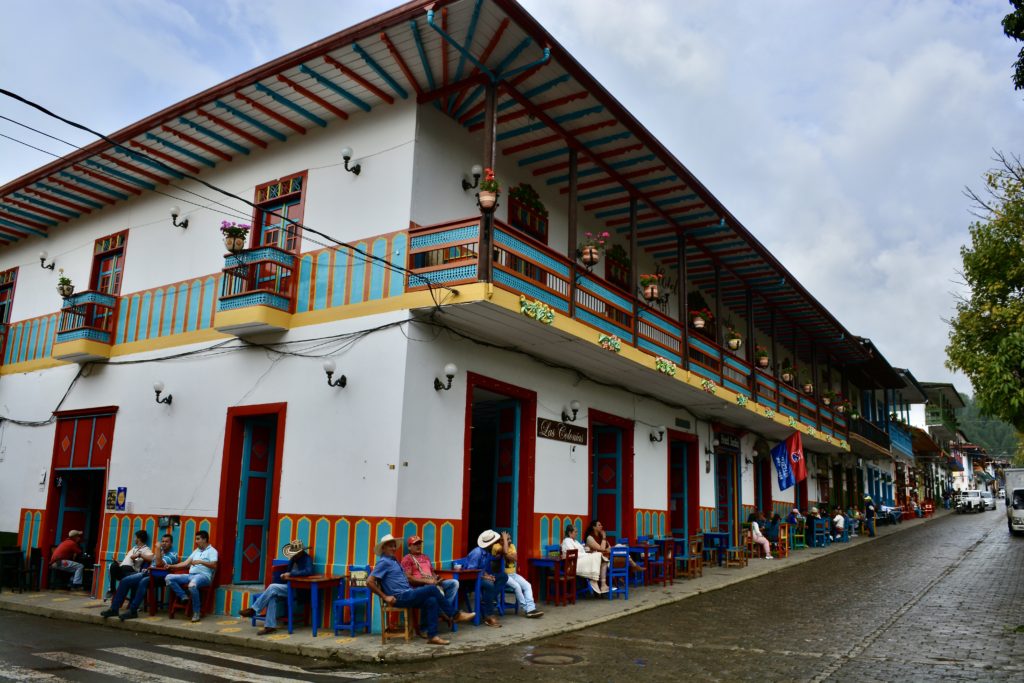
Jardín is a small town, very well presented around a principal town square. The many buildings have their doors, window and anything in wood all painted in primary colours. Also while we had a fair bit of rain while we were there, the protruding balconies and overhanging roofs provided a very effective shelter for the pavements below.
The main square is surrounded by a number of bars and cafes, each with their own colour scheme, where many of the locals simply sit, drinking their coffee, watching the world go by. The old men often in their distinctive Colombian cowboy style hats.
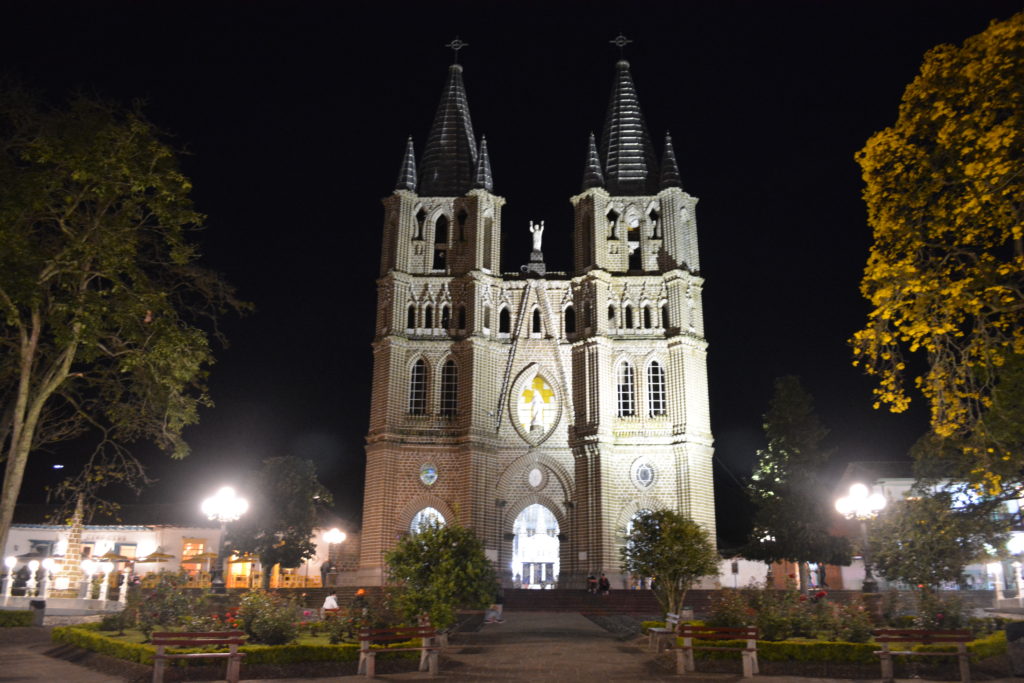
Jardín is a popular weekend destination for the population of Medellín, it is a bit to far for day trips, which are better served by Guatape, which we didn’t choose to visit this time.
In Comuna 13 we saw a large group of bikers, all with the Latin American Bikers Association matching leathers, each one with their own town embroidered on, including various towns in Colombia, like Barranquilla, Cucuta, Medellín etc. plus also towns outside of Colombia like Mexico City, Puerto Rico etc. Some of this bikers also visited Jardín. Some of the female bikers also had pink bunny ears on their helmets.
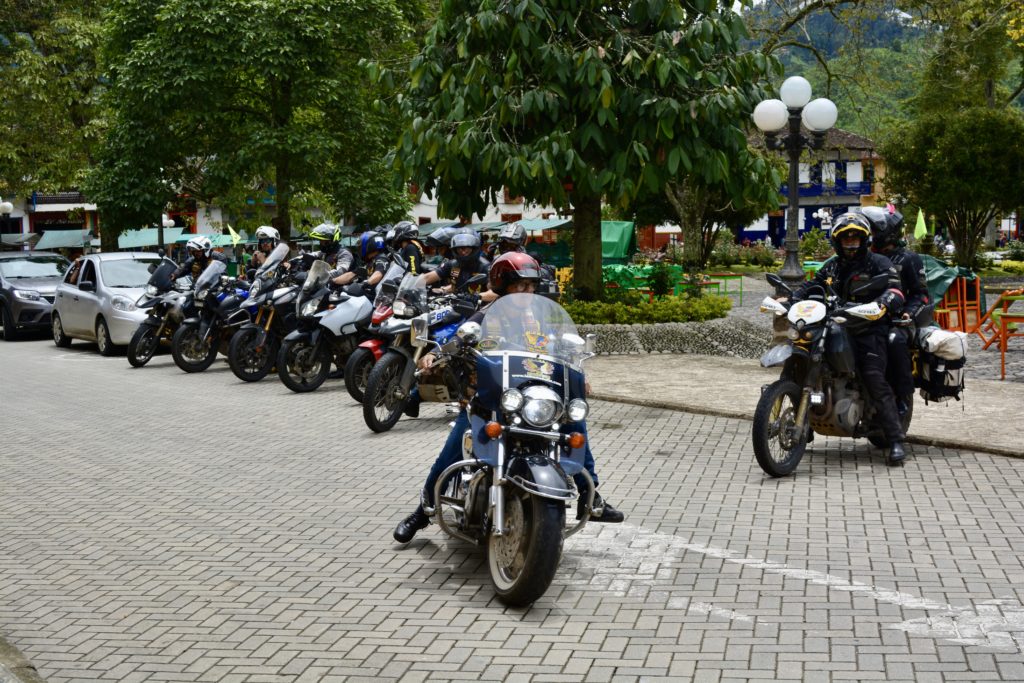
From Jardín, we continued our journey South to Manizales. The direct bus we originally booked didn’t run, but the helpful guys at Cootransrio got us on another bus to Rioscuro and from there on a collectivo to Manizales. The journey to Rioscuro was on a largely unmade road and went across a mountain and a National Park. While it took us nearly four hours, the landscape was stunning, especially going through the cloud forest and seeing all the fast running streams.
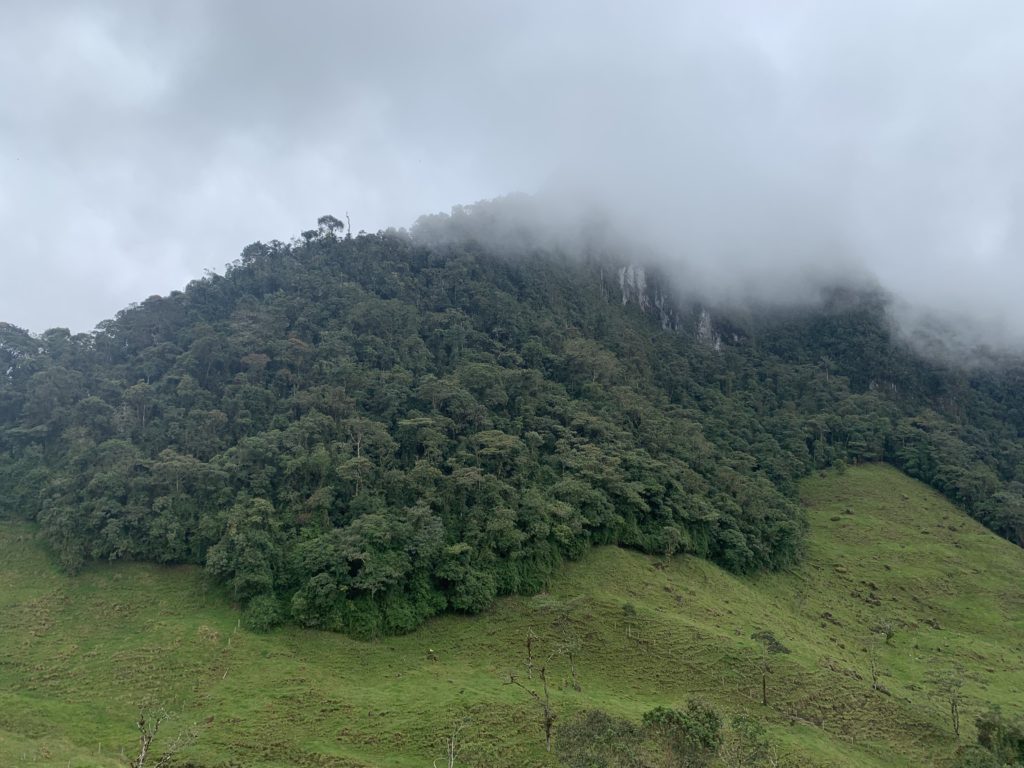
Dates visited: 13th to 19th May 2022
